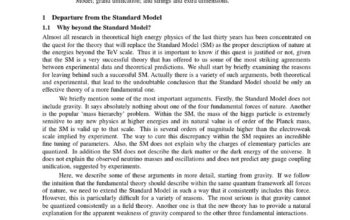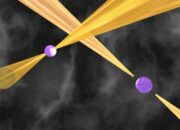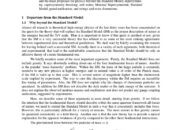The universe is a grand tapestry interwoven with strings of cosmic radiation, each strand resonating with the vibrations of the cosmos itself. Intriguingly, these strings are not merely figurative; they represent the intricate phenomena underlying quantum mechanics and the propagation of signals across the expanse of space. In this exploration of “Strings and Signals: Cosmic Radiation Plays Tricks Again,” we shall delve into the multifaceted dimensions of cosmic radiation, resonances of fundamental forces, and the enigmatic interplay between observed phenomena and theoretical predictions.
At the heart of our cosmic narrative lies the concept of radiation. Cosmic radiation, emanating from sources such as supernovae and quasars, bathes the Earth in a ceaseless flux of high-energy particles. Each particle acts as a messenger from the vastly remote and ancient corners of the universe. These subatomic couriers, including protons and electrons, are laden with information that, upon reception, can inform the very fabric of our understanding of astrophysical processes and the universe’s evolution.
Yet, the cosmos often presents an intellectual labyrinth, with cosmic radiation playing tricks on our perceptions. The duality of particles and waves is emblematic of this complexity. At times, cosmic rays may masquerade as particles, penetrating the shielding atmosphere of Earth. At other times, they assume wave-like characteristics, exhibiting interference patterns that can baffle even the most astute physicists. This beguiling behavior not only challenges our classical intuitions but lays bare the profound interconnectedness of matter and energy.
As we explore these intricate layers, it becomes essential to introduce the concept of string theory—a theoretical framework that proposes that fundamental particles are not points, but rather one-dimensional strings vibrating at different frequencies. Just as musical strings produce distinct notes based on their vibrational states, the nature of particles is dictated by their respective string vibrations. This metaphor extends elegantly into our understanding of cosmic radiation. The high-energy interactions that give rise to cosmic rays can be viewed through the lens of these strings, reinforcing their role as foundational components in the structure of the universe.
The study of cosmic strings—hypothetical topological defects that may have formed during phase transitions in the early universe—further enhances the understanding of our cosmological landscape. Cosmic strings could act akin to snares for radiation, creating gravitational effects that warp spacetime and influence the behaviors of nearby celestial bodies. Additionally, the theorized emissions from cosmic strings can lead to gravitational waves, adding yet another layer of complexity to our understanding of the universe’s energetic tapestry.
Moreover, the detection of cosmic signals via advanced technological means reveals the depths of our curiosity and ingenuity. Observatories equipped with cutting-edge instruments capture the fleeting whispers of these cosmic messengers, painting a vivid picture of phenomena like gamma-ray bursts—cataclysmic explosions resulted from the death throes of massive stars. The research surrounding these bursts illustrates the interplay between quantum mechanics and general relativity, as well as the fundamental quest to decode the language of the universe.
However, the interpretation of cosmic signals presents its own set of challenges. Cosmic radiation is often accompanied by background noise—celestial particles and waves that conspire to obfuscate signal clarity. This noise can yield false identifications, drawing an illusionary curtain over the true nature of the cosmos. This predicament has fostered the growth of sophisticated filtration techniques, akin to the process of tuning a musical instrument to discern the pure notes hidden amongst cacophonous dissonances.
Such challenges bring forth critical questions: How do we distinguish between the genuine signals from the universe and the noisy distractions? What metaphysical narratives are concealed within these cosmic messages? As researchers grapple with these issues, the pursuit becomes increasingly interdisciplinary, uniting physicists, astronomers, and even philosophers in an endeavor that transcends traditional boundaries.
Astrophysics, therefore, becomes a grandeur symphony, where the strings of cosmic radiation resonate harmoniously with the signals captured through sophisticated instruments. Each discovery adds a verse to the ongoing song of the universe, inviting contemplation and reflection. At the confluence of theoretical speculation and empirical investigation, we find ourselves at the edges of understanding, contemplating the very nature of existence itself.
In recent years, the dawn of extraordinary technologies, such as space-based telescopes, has heralded new epochs in the study of cosmic radiation. Scientists harnessing these advancements accumulate a wealth of data with unprecedented precision. Such inquiries illuminate the nature of the cosmic microwave background radiation—a relic of the Big Bang that now permeates our universe—serving as a backdrop against which the grand narrative of cosmic evolution unfolds.
Nonetheless, amidst our quests for clarity, we must remain cognizant of the limitations inherent in our methodologies. The conceptual frameworks that guide our observations must continually be interrogated, evolving in tandem with our growing comprehension of the intricate cosmos. It is in the dance between the known and the unknown that the allure of cosmic radiation truly resides.
Ultimately, as we conclude this inquiry into the strings and signals of cosmic radiation, we acknowledge the ever-shifting and complex landscape of our universe. The tricks played by cosmic radiation remind us that science is not a destination but a continuous journey, one that beckons further exploration and deeper understanding. Through diligent research, thoughtful reflection, and an unwavering curiosity, humanity charted its course through the cosmos, unraveling the resonances and riddles that define our existence within the symphony of the universe.












